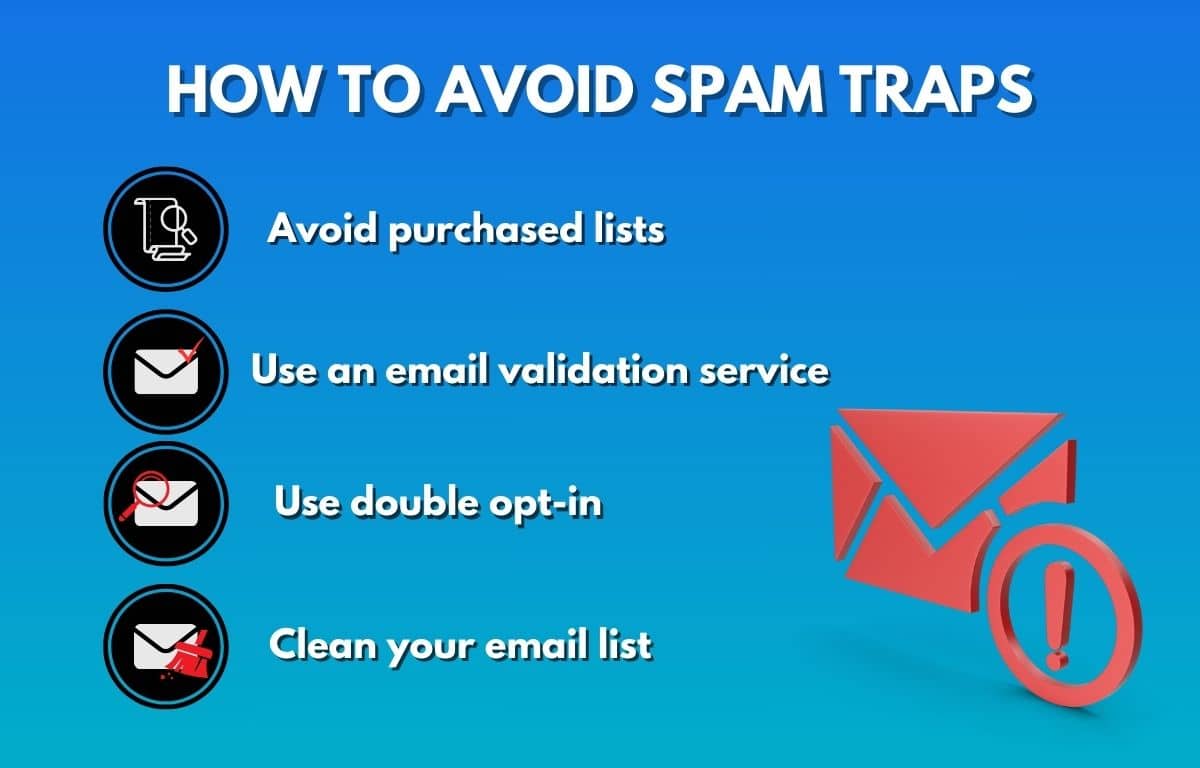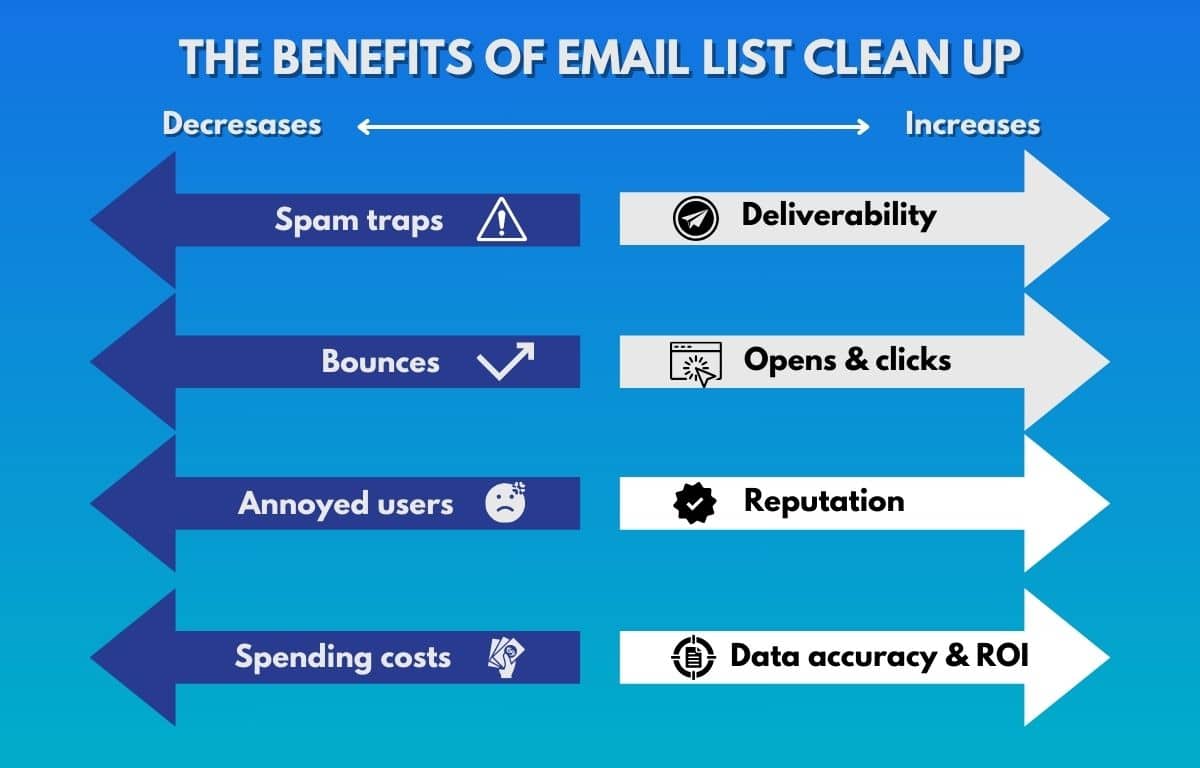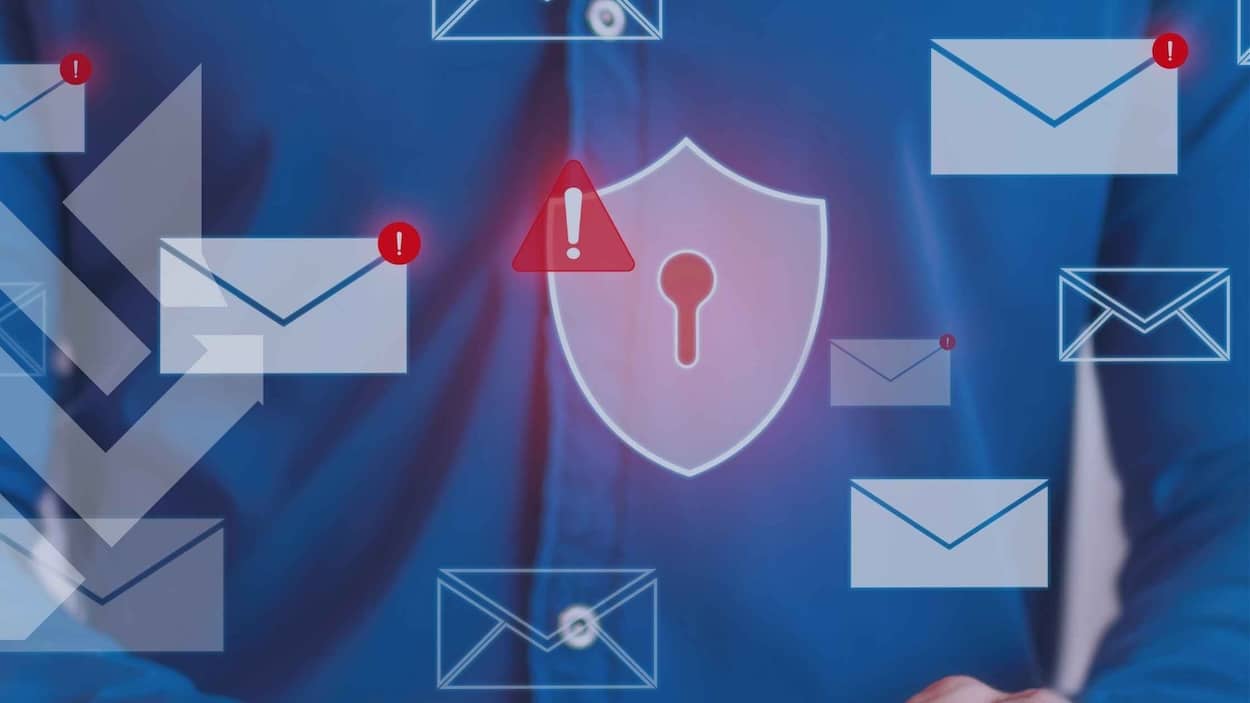List cleaning is essential for a successful email marketing strategy. Sending messages to outdated or unengaged contacts lowers open rates, increases bounces, and can even land emails in the spam folder. A well-maintained list ensures that campaigns reach the right people—those genuinely interested in the content—leading to stronger engagement, higher conversions, and a healthier sender reputation.
Want to ensure your emails land in the right inboxes and drive real results? Keep reading to discover the risks of neglecting list cleaning, the key benefits of maintaining a healthy subscriber base, and the best strategies to keep your list in top shape.
The Risks of Neglecting List Cleaning
A strong email marketing strategy depends on a well-maintained list. When businesses send emails to outdated, inactive, or invalid addresses, they not only risk lower engagement but also damage their sender’s reputation. Ignoring list cleaning can lead to poor deliverability, declining open rates, and unnecessary costs. Understanding these risks is key to keeping campaigns effective and inbox placement strong.
The effectiveness of your email list matters more than its size. A well-organized and segmented list enables you to deliver targeted messages that connect with specific audience groups, boosting engagement and conversion rates.
1) Impact on Deliverability
Email providers monitor bounce rates to determine whether a sender is trustworthy. Bounce rate refers to the rate at which emails fail to deliver successfully. When an email is sent to an invalid address, it “bounces” back, signaling to providers that the sender’s list may not be well-maintained. If this happens too often, the sender’s reputation declines, making it more likely that future emails will be marked as spam or blocked altogether.
Another issue is spam traps—email addresses created specifically to catch senders who don’t practice list hygiene. Messages sent to these addresses further harm deliverability, leading to long-term damage. A poor sender reputation means even valid subscribers may stop seeing emails in their inbox, making it harder to engage with your audience.

2) Reduced Engagement Metrics
Email marketing success depends on how many people open and interact with messages. A neglected list includes inactive subscribers who no longer engage, dragging down open and click-through rates. Email providers interpret low engagement as a sign that recipients don’t find the content valuable, which can cause future emails to be filtered out or deprioritized.
The problem compounds over time. If engagement continues to drop, email algorithms may rank the sender as unimportant or irrelevant. This means fewer emails reach active subscribers, limiting the effectiveness of even well-crafted campaigns.
3) Increased Costs
Most email marketing platforms charge based on the total number of subscribers, meaning that an outdated or unclean list can significantly increase costs without delivering any real value. List cleaning helps eliminate inactive, unengaged, or invalid email addresses, preventing wasted resources and ensuring more accurate campaign performance metrics. Without regular list cleaning, businesses may struggle to measure true engagement and optimize their email marketing efforts effectively.
Worse, sending emails to too many invalid addresses can trigger penalties from email service providers (ESPs), potentially leading to higher sending fees, reduced deliverability, or even account suspension. A poor sender reputation caused by excessive bounces or spam complaints can impact future campaigns, making it more difficult to reach legitimate subscribers. By implementing list cleaning as a routine practice, businesses can maintain a strong sender reputation, improve email deliverability, and maximize their marketing ROI.
Beyond financial costs, the time and effort spent on ineffective campaigns take a toll. Marketing teams waste resources crafting emails that never reach the right audience, reducing ROI and overall campaign success.
Best Practices for Effective List Cleaning
A clean email list improves deliverability, boosts engagement, and keeps marketing efforts efficient. Following these best practices ensures that emails reach the right audience.
1) Implement Double Opt-In
A double opt-in process confirms that new subscribers genuinely want to receive emails. After signing up, they get a confirmation email requiring a response. This extra step prevents fake sign-ups, reduces spam complaints, and ensures a list filled with engaged users. Subscribers who take action from the start are more likely to interact with future emails.

2) Regularly Monitor Engagement
Tracking subscriber behavior helps identify inactive users. If someone hasn’t opened emails in months, they may no longer be interested. Try re-engagement campaigns with special offers or surveys to bring them back. If they remain inactive, removing them improves list quality and prevents wasted efforts on unresponsive contacts.
3) Utilize Email Verification Tools
Email verification services help detect invalid, fake, or risky addresses before sending emails. These tools scan lists, flagging issues that could lead to high bounce rates. Regular verification keeps the list accurate, protects sender reputation, and improves overall campaign performance.
4) Remove Role-Based and Generic Email Addresses
Emails sent to addresses like info@company.com or support@business.com often go unread. These generic addresses belong to teams rather than individuals, making engagement less likely. Removing them from the list increases open rates and improves targeting.
5) Set Up an Automated List Cleaning Schedule
Regular maintenance keeps the email list fresh and effective, ensuring that marketing campaigns reach the right audience. List cleaning plays a crucial role in preventing the buildup of invalid addresses, reducing bounce rates, and maintaining a high sender reputation. Without consistent list cleaning, businesses risk sending emails to outdated or unresponsive contacts, which can harm deliverability and engagement rates.
Setting up an automated schedule for list cleaning eliminates the need for manual oversight while ensuring ongoing list hygiene. Automation helps identify and remove inactive subscribers, detect spam traps, and validate email addresses in real time, keeping the list accurate and up to date.
A well-maintained and properly segmented email list leads to higher engagement, lower marketing costs, and stronger overall results. Next, let’s explore the top tools and services available to streamline list cleaning and ensure maximum deliverability.
Tools and Services for List Cleaning
Keeping an email list clean helps improve deliverability, reduce bounces, and boost engagement. The right tools identify invalid addresses, remove inactive contacts, and protect sender reputation. Using an effective verification service ensures that emails reach the right audience, increasing the chances of conversions.
Overview of Email Verification Services
Email verification services scan email lists to detect invalid, fake, or risky addresses before messages are sent. These tools improve email marketing performance by reducing bounce rates and protecting sender reputation. Several trusted services help businesses maintain a high-quality list.
1) NeverBounce
NeverBounce verifies emails in real time and removes outdated addresses from mailing lists. It supports bulk verification, allowing businesses to clean thousands of addresses at once.
Example: If a company runs a weekly newsletter but notices declining open rates, NeverBounce can scan the list and remove inactive or fake addresses. This improves engagement by ensuring emails reach real subscribers.
2) Kickbox
Kickbox uses its Sendex™ Score to measure email quality, ranking addresses based on their likelihood to engage. It offers both single and bulk verification, helping businesses avoid sending messages to invalid contacts.
Example: A retail business preparing for a holiday email campaign can use Kickbox to verify customer emails before sending promotions. This prevents high bounce rates and ensures discounts reach interested shoppers.
3) Omnisend
Omnisend provides both email marketing and built-in list-cleaning tools. It automatically removes bounced addresses and spam traps, helping businesses maintain high deliverability.
Example: An online boutique using Omnisend can segment verified subscribers into targeted email lists. This allows the brand to send personalized recommendations only to engaged customers, improving open rates and conversions.
Criteria for Selecting a Service
Choosing the right email verification tool depends on several factors. Businesses should consider accuracy, integration, and cost to find the best fit for their needs.
1) Accuracy
The effectiveness of an email verification tool depends on its ability to detect invalid, duplicate, and risky email addresses with high accuracy. Without proper list cleaning, businesses risk sending emails to non-existent or inactive addresses, which can harm their sender reputation and lower overall engagement. A good service should identify and filter out:
- Hard bounces – Emails that cannot be delivered due to invalid, closed, or non-existent addresses. These are permanent failures and should be removed from the list immediately.
- Soft bounces – These are temporary delivery failures, often caused by a full inbox, server issues, or email size restrictions. While these addresses may become valid again, repeated soft bounces should be monitored and removed if necessary.
- Spam traps – Email addresses created by ISPs or anti-spam organizations to identify senders who do not maintain proper list hygiene. Sending emails to spam traps can severely damage a sender’s reputation and result in blacklisting.
Services like NeverBounce and ActiveCampaign claim high accuracy rates, allowing businesses to confidently maintain clean email lists and send messages only to valid contacts. By integrating these services, businesses can enhance their email marketing performance, reduce wasted resources, and improve long-term deliverability.
Why accuracy matters: Poor accuracy in email verification can lead to wasted marketing efforts, increased bounce rates, and a damaged sender reputation. When too many emails bounce or get flagged as spam, email service providers (ESPs) may classify the sender as untrustworthy, resulting in emails being delivered to spam folders instead of inboxes. Over time, this can significantly impact campaign performance, making it harder to engage with the target audience.
Example: A retail company launches a seasonal promotional campaign and notices a sudden spike in bounce rates. Many emails fail to reach recipients due to invalid addresses or outdated contact information. As a result, their email deliverability declines, and fewer customers receive their promotions.
2) Integration
A seamless connection between an email verification service and an existing platform saves time and ensures efficient list cleaning. Without proper integration, businesses may struggle with manual data transfers, increasing the risk of errors and delaying the verification process.
By choosing an email verification tool that integrates easily with existing marketing platforms, businesses can:
- Improve overall deliverability by ensuring emails only reach engaged and valid contacts.
- Prevent manual uploads that slow down workflows and introduce inaccuracies.
- Automate list cleaning by verifying new email addresses before they are added to a campaign.
- Reduce bounce rates by eliminating invalid or risky email addresses before sending messages.
Why integration matters: Without direct integration, businesses may need to manually upload and clean email lists, leading to delays, increased workload, and potential errors in the verification process. Manual verification also means businesses might continue sending emails to invalid addresses in the meantime, harming their sender reputation and reducing engagement rates.
Example: A fast-growing e-commerce startup relies on ActiveCampaign for email marketing and wants to improve its deliverability. Instead of manually checking email lists for invalid addresses, the company integrates NeverBounce directly into ActiveCampaign. This allows them to automatically verify every new subscriber before they are added to an active campaign.
As a result:
- Every email reaches a valid recipient, improving engagement and ROI.
- The automation saves time and prevents human error, making their email marketing more effective.
- They eliminate invalid email addresses in real time, reducing bounce rates.
By leveraging list cleaning through automation and seamless integration, businesses can enhance their email marketing success, ensuring better engagement, higher conversion rates, and a strong sender reputation.
3) Cost
The pricing structure of an email verification service varies, with some providers offering pay-as-you-go models and others using monthly subscription plans. The right choice depends on how frequently a business performs list cleaning, the volume of contacts being verified, and the company’s overall email marketing strategy.
For businesses with occasional verification needs, a pay-as-you-go model is ideal, allowing them to pay only for the number of emails verified at a given time. In contrast, companies that send high volumes of emails regularly benefit more from a subscription-based plan, ensuring continuous list cleaning and seamless email validation without unexpected costs.
Why cost matters: Choosing the wrong pricing model can lead to unnecessary expenses or poor list hygiene.
- Underinvesting in list cleaning can result in outdated, invalid, or risky contacts remaining on the list, leading to higher bounce rates, poor deliverability, and lower engagement.
- Balancing cost and necessity ensures that businesses maintain high email deliverability without overspending. poor list hygiene and ineffective marketing campaigns.
- Overpaying for features that a business doesn’t need wastes marketing budgets.
Example: A small business that sends email campaigns only once per quarter wants to ensure its list is up to date before each campaign. They choose a pay-as-you-go plan from Kickbox, allowing them to verify only when needed, without committing to a monthly fee.
Meanwhile, a fast-growing e-commerce company relies on daily email campaigns for promotions, abandoned cart reminders, and customer engagement. To keep their list cleaning process continuous, they opt for a subscription-based model with ActiveCampaign, ensuring real-time email verification and ongoing list hygiene.
Implementing a List Cleaning Strategy

A strong list-cleaning strategy keeps email marketing effective by ensuring messages reach engaged subscribers. Without regular maintenance, inactive or invalid contacts pile up, leading to higher bounce rates and wasted marketing efforts. A structured plan helps maintain a high-quality list and maximizes campaign performance.
Establish a Cleaning Schedule
Setting a consistent schedule for list cleaning prevents outdated emails from harming deliverability. The ideal frequency depends on list size, industry, and email frequency.
- Quarterly cleaning works for small businesses with steady subscriber growth. Regular maintenance helps prevent the accumulation of inactive contacts.
- Monthly cleaning suits e-commerce brands and companies that send frequent promotional emails. A higher volume increases the risk of outdated addresses.
- Automated cleaning removes invalid emails in real time. This is ideal for businesses that collect a high number of sign-ups and need constant list hygiene.
Example: A subscription box company sends weekly newsletters and runs a quarterly list cleanup to remove bounced emails and unengaged users. This improves open rates and prevents spam complaints.
Try this: Automate email verification for new subscribers and run engagement reports before each cleaning cycle. This reduces the risk of fake or mistyped email addresses entering the system and ensures each cleaning session removes only truly inactive contacts.
HubSpot estimates that 30% of company data becomes outdated annually, highlighting the need for regular list cleaning to maintain accuracy.
Segment Your Audience
Grouping subscribers based on engagement levels improves targeting and personalization. Sending relevant content increases open rates, lowers unsubscribes, and boosts conversions.
- Highly engaged subscribers receive exclusive promotions, early access to offers, or VIP rewards to keep them interested.
- Inactive subscribers get re-engagement campaigns with special discounts, surveys, or personalized reminders to encourage interaction.
- New subscribers go through a welcome series that introduces them to the brand, sets expectations, and encourages early engagement.
Works best for brands looking to personalize email marketing and reduce churn. This method is especially useful for e-commerce, SaaS, and subscription-based businesses.
Example: A fitness brand segments subscribers based on email interactions. Those who haven’t opened an email in three months get a “We Miss You” campaign with a free training plan and a discount on their next purchase.
Try this: Move inactive subscribers to a separate segment and send targeted re-engagement campaigns before removing them. This approach gives subscribers a final chance to engage before being deleted, ensuring no potential customers are lost unnecessarily.
Monitor and Analyze Results
Tracking key metrics after list cleaning helps refine email strategies. Without regular monitoring, brands may remove contacts too aggressively or fail to see the impact of their efforts.
- Open and click-through rates show how well subscribers engage with content. A rise after cleaning suggests better targeting.
- Bounce rates indicate list health. Lower bounces mean emails reach valid inboxes.
- Spam complaints reveal issues with content, frequency, or list quality. High complaints signal the need for better targeting.
Example: A SaaS company tracks email performance before and after cleaning its list. Open rates increase, confirming that removing unengaged contacts improves campaign effectiveness.
Try this: Run A/B tests before and after a cleanup to compare engagement metrics. If email performance drops, adjust re-engagement strategies instead of removing too many contacts at once. This ensures that list cleaning enhances results rather than reducing potential engagement.
Conclusion
A clean email list is essential for successful email marketing. Removing invalid addresses, re-engaging inactive subscribers, and verifying new contacts improve deliverability, engagement, and cost efficiency. Regular list maintenance ensures emails reach the right audience and drive real results.
Email marketing works best when lists are filled with engaged, interested subscribers. Setting a cleaning schedule, email verification tools, and segmenting contacts help businesses maintain high-quality lists. Tracking performance after cleaning ensures ongoing improvements and prevents wasted efforts on unresponsive contacts.
Need help optimizing your email marketing strategy for better results? Contact us today for expert guidance on improving deliverability and engagement!




